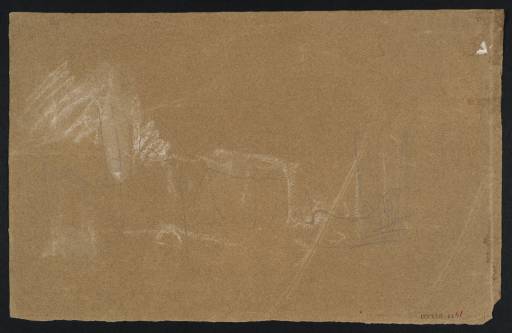Joseph Mallord William Turner The Molo Waterfront, Venice, from the Bacino, with the Campanile and the Palazzo Ducale (Ducal Palace) 1840
Image 1 of 2
-
 Joseph Mallord William Turner, The Molo Waterfront, Venice, from the Bacino, with the Campanile and the Palazzo Ducale (Ducal Palace) 1840
Joseph Mallord William Turner, The Molo Waterfront, Venice, from the Bacino, with the Campanile and the Palazzo Ducale (Ducal Palace) 1840 -
 Joseph Mallord William Turner, The Molo Waterfront, Venice, from the Bacino, with the Campanile and the Palazzo Ducale (Ducal Palace) 1840 (Enhanced image)Enhanced image
Joseph Mallord William Turner, The Molo Waterfront, Venice, from the Bacino, with the Campanile and the Palazzo Ducale (Ducal Palace) 1840 (Enhanced image)Enhanced image
Joseph Mallord William Turner,
The Molo Waterfront, Venice, from the Bacino, with the Campanile and the Palazzo Ducale (Ducal Palace)
1840
Joseph Mallord William Turner 1775–1851
The Molo Waterfront, Venice, from the Bacino, with the Campanile and the Palazzo Ducale (Ducal Palace) 1840
D34232
Turner Bequest CCCXLII 41
Turner Bequest CCCXLII 41
Chalk and pencil on brown wove paper, 147 x 230 mm
Inscribed in pencil ‘O | 1[...]’ top left
Inscribed in red ink ‘41’ bottom right
Stamped in black ‘CCCXLII – 41’ bottom right
Inscribed in pencil ‘O | 1[...]’ top left
Inscribed in red ink ‘41’ bottom right
Stamped in black ‘CCCXLII – 41’ bottom right
Accepted by the nation as part of the Turner Bequest 1856
References
1830
A.J. Finberg, A Complete Inventory of the Drawings of the Turner Bequest, London 1909, vol.II, p.1100, CCCXLII 41, as ‘Landscape’, c.1830–41.
1995
Cecilia Powell, Turner in Germany, exhibition catalogue, Tate Gallery, London 1995, p.161 under no.89.
Finberg later annotated his vague 1909 Inventory entry (‘Landscape’, in a large grouping of ‘Miscellaneous: black and white’ drawings on ‘Brown Paper’): ‘Prby. Venice.’1 In a combination of pencil and chalk, this seems to be a looser version of the readily recognisable view on a similar, consecutively numbered sheet, Tate D34231 (Turner Bequest CCCXLII 40), looking north to the entrance of the Piazzetta from the Bacino. The waterfront façades of the Libreria Sansoviniana and Palazzo Ducale (Doge’s Palace) are here reduced to basic block-like forms at the left and centre, with the campanile of San Marco (St Mark’s) rising beyond, the tower smudged smooth to differentiate it from the vigorous chalk strokes around it. The corresponding verticals towards the right are likely the masts of moored boats.
The arrangement of these well-known and frequently depicted elements can be linked thematically to two colour studies in the present subsection, centred on the Piazzetta, the first also showing the waterfront (Tate D32180, D32220; Turner Bequest CCCXVII 1, CCCXVIII 1). Turner might have gone on to develop the rough outlines here to a similar degree. There is another slight Venice subject on the verso (D34233; Bequest CCCXLII 41v); see also D40321, a closely-related sketch on the verso of D32249 (CCCXIX 1), a colour study of Santa Maria della Salute in the parallel grouping of subjects near the Hotel Europa (Palazzo Giustinian) on the nearby Grand Canal.
Other than in passing on technical grounds (see below), this sheet has not featured in the published literature on Turner’s Venetian work. It is included here and dated to 1840 by its technical and stylistic affinities with many other sheets now linked to that year’s tour. Compare for example four pencil studies with white highlights on a folded sheet of buff-grey paper, showing the Piazza (Tate D32192–D32195; Turner Bequest CCCCVIII 13a–d). Like the present work, they have the air of swift, direct observation.
Technical notes:
Ian Warrell did not mention this sheet in his near-comprehensive survey of the papers used on Turner’s visits to Venice, including many grey and brown English and Continental sheets used in 1840.1 Cecilia Powell did include it as an example of ‘Italian brown paper’ in her key discussion linking contemporary Venetian and German subjects2 (see the Introduction to the tour).
Matthew Imms
September 2018
How to cite
Matthew Imms, ‘The Molo Waterfront, Venice, from the Bacino, with the Campanile and the Palazzo Ducale (Ducal Palace) 1840 by Joseph Mallord William Turner’, catalogue entry, September 2018, in David Blayney Brown (ed.), J.M.W. Turner: Sketchbooks, Drawings and Watercolours, Tate Research Publication, December 2019, https://www

